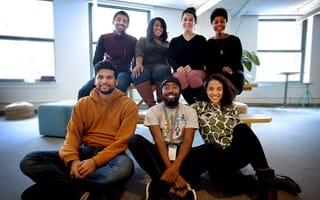
While NYC is one of the most diverse cities in the country, its tech scene is still catching up. Currently, the U.S. tech industry is dominated by white men — and the ratio is only just beginning to change.
According to a 2017 report by Information is Beautiful, in the last 12 months, Apple, eBay and Microsoft onboarded 1 percent more women, and Microsoft and Facebook gained 3 percent and 2 percent non-white employees, respectively. The increase may seem minuscule — until you consider that the total number of employees at Apple alone is upward of 116,000. Progress is being made, albeit slowly.
To boost diversity in NYC tech, local startups are spearheading initiatives that strip bias from the hiring process and foster a comfortable environment for employees of all genders, ethnicities and sexual orientations. Healthcare tech company Flatiron Health’s diversity strategy is made up of three key tenets to educate and support its team. The company has also organized an Inclusion Working Group that brings employees together and makes sure every voice is heard.
“The mission of our program is to shine the light, diversify our pipeline and encourage an inclusive culture,” said recruiting programs and operations manager Ahmadu Gidado, who co-leads the initiative alongside talent development project manager Lindsey Gilligan.
Flatiron’s program “shines a light” by sharing demographic metrics on a quarterly basis in a company-wide meeting. This serves multiple benefits: Not only do employees gain more transparency, but executives are also held accountable. This support from leadership, Gidado said, is key.
“When we started to formalize our diversity and inclusion strategy, [founders] Nat and Zach partnered with us to vet our ideas, and at a company meeting earlier this year, they explained to the company why they believed diversity was important,” he said. “They continued to demonstrate their commitment as they sponsored Unconscious Bias Training for our executive committee, who were then able to champion the training as we rolled it out to all managers.”

But Flatiron isn’t alone in its efforts to take diversity seriously. Video advertising service Telaria’s diversity program is led by employee experience manager Israel Gutierrez, who agrees that leadership plays a major role in office diversity and inclusion.
“They can inspire diversity by being the example,” said Gutierrez.
He added that in order to promote diversity, an office must have a wide range of events and activities that honor differences. Telaria celebrates Pride Month with a “pie an exec in the face” fundraiser for the NYC AIDS Walk and hosts a panel discussion focused on LGBTQ representation in media. The company also celebrates Hispanic Heritage month with a salsa-making event that brings together all employees.
“Ensuring a diverse workplace equates to inclusive programming. One does not operate without the other,” said Gutierrez. “Diversity is what you have; inclusion is what you do with it. Every community, no matter how big or small, has an organic diverse makeup — it’s the type of programming that follows that fosters cohesion.”
So how can recruiters bring in more diverse talent to begin with? Before a recruiter even brings someone in for an interview, it’s important to identify what makes someone successful in the role. Gutierrez explained that doing so will help hiring managers stay focused on what’s important.
“Sticking to these core competencies in the interview process ensures a specific trait is isolated and assessed, removing bias in the process,” he said.
At Flatiron, Gidado sources candidates through events like Grace Hopper and Tech Jobs Tour, which gather talented tech professionals who are women or minorities. His company also has strong community partnerships with organizations like OnMogul, Lesbians Who Tech and other diversity-focused groups. Working with these organizations — and encouraging a celebration of differences in the office — is what can help bring an eclectic mix of talent into the tech industry.




